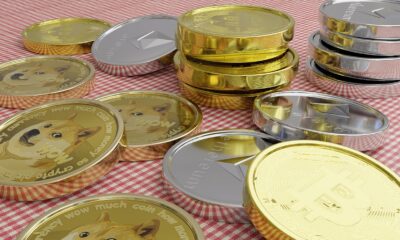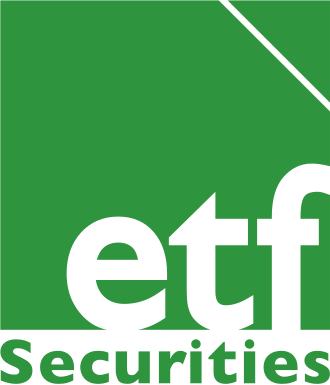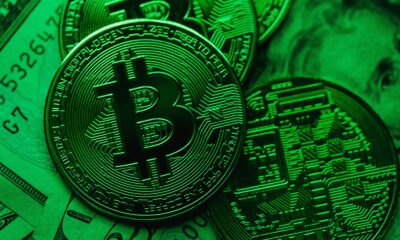The automation Opportunity a 2018 Outlook. In the run-up to Christmas, the convenience offered by Amazon Prime is something that many of us take for granted. As Amazon’s competitors struggle to catch up, the Prime service is putting tremendous pressure on supply chains around the world. The growth of the Prime service has been greatly facilitated by the higher intensity afforded by Amazon’s warehouse robots. It provides just one example of how robotics, automation and artificial intelligence are fast transforming our world.
Amazon’s 2012 acquisition of Kiva Systems – now Amazon Robotics – was a turning point for the automation industry. Kiva’s robots greatly improved flexibility and productivity at Amazon’s warehouses, allowing the company to offer faster service and making its Prime offering viable and sustainable.
Now that Amazon has taken Kiva in house, other companies are striving to accelerate the automation of supply chains elsewhere. So, as 2018 unfolds, we should see increased application of automation around the globe. Jeremie Capron, Managing Partner and Director of Research at Robo Global, says “with only around 5% of warehouses currently automated, there is vast scope for growth here”. Logistics is just one of the many fields undergoing a robotics revolution. Manufacturing is set to be transformed by technologies such as autonomous manipulation and machine vision. The former uses robots to recognise and select specific components, while the latter performs quality inspection in place of human eyes, through a combination of cameras and advanced algorithms.
We are also seeing the widespread deployment of collaborative robots – autonomous machines that can work alongside human operators, rather than having to be ‘caged’ for safety reasons. This allows machines to do the more onerous or repetitive tasks, while human workers can concentrate on adding value in more sophisticated ways.
‘Cobots’ are becoming cheaper, smaller and easier to program, and the sector is now growing at an annualised rate of over 50%.1
These automated tools aren’t perfect. But they are constantly improving through the use of artificial intelligence: specifically, machine learning. “When automated systems make a mistake,” says autonomous-systems pioneer Raffaello D’Andrea, PhD, “learningenabled algorithms allow them to avoid making it again. In mundane tasks, this gives them a real advantage over human workers, who can make the same errors repeatedly because of distraction or fatigue.
And, crucially, machine learning allows solutions to be disseminated quickly across machines worldwide.”
But it’s not only in the repetitive processes of logistics and manufacturing that robots are making an impact. They’re taking on much more complex tasks too. Autonomous vehicles are already with us – and will be making their presence felt in the year ahead. “Before 2018 is out,” according to Jeremie Capron, “we’re likely to see the first autonomous taxi. As with so much automation, this will start small – probably in a single town or city – before broadening out as mistakes are corrected and customer experiences are improved.”
Healthcare will be another growth area in 2018. Robotic surgery systems have been around for some time, but their use is accelerating.
Intuitive Surgical’s da Vinci robots performed some 750,000 abdominal procedures in 2016;2 in 2017, the growth rate has been in the mid to high teens.3 And robots are now being used for other procedures too, including spinal surgery. The use of 3D systems to model the spine leads to greater precision and better patient outcomes. Israel’s Mazor Robotics has reported increased sales of its spinal systems this year,4 but with potential for huge improvements in surgical safety, there is much more to come here.
For investors looking to harness these powerful trends, there are several important considerations. First, penetration of the existing markets in manufacturing, logistics and healthcare is still very low.
So the automation megatrend is very much in its infancy. Investors therefore have an opportunity to ‘get in early’. They should also be aware, however, that growth may be volatile and is not guaranteed.
The disrupters may themselves be disrupted.
Second, the implications of a given technology can be hard to predict. The benefits of Kiva’s robots were initially thought to lie in enhanced cost efficiency. But warehouse operators saw the main advantages in the flexibility they offered and in the elimination of human inefficiency. Similarly, the use of a given technology can skip from one application to another, and from one industry to the next. The initial application of an autonomous system can be seen as a testing ground, in which a technology is refined and enhanced – before it finds other applications elsewhere. Jeremie Capron notes that these developments are inherently unpredictable, because artificial intelligence and robotics are systems-led phenomena: “new capabilities are developed, and applications of those capabilities follow”.
Third, because it’s hard to predict where the next breakthrough will come, it’s important for investors to have exposure across the theme. Not only does this position portfolios for the unexpected breakouts, but it also ensures that they are not overexposed to the biggest names in the business. Some of the best-known industrial robotics companies – the likes of Fanuc, ABB and Rockwell – are highly cyclical. “This cyclicality can be terrifying for investors,” says Richard Lightbound, Managing Director and CEO EMEA of ROBO Global. “So spreading investments across a broad range of companies should result in a much smoother ride than simply buying the flagship industrial firms. And, as we come to the end of an extraordinary year for technology stocks, this diversification also avoids overexposure to companies such as Nvidia that are now trading on elevated valuations.”
Above all, it is worth noting that this revolution is only at the beginning and could continue to see growth. Kiva started selling its systems only in 2005. Few could have foreseen that it would be playing such a large part in the expansion of e-commerce today.
The growth pattern typical in robotics, automation and artificial intelligence means that companies can rise from a barely noticeable start to global prominence in a short period of time. This implies that there is considerable growth to be captured in emergent technologies.
By Christmas 2018, this exciting megatrend will be much further advanced – doubtless having taken some surprising turns along the way. But for far-sighted investors, there’s no time like the present.
For more information, visit:
etfsecurities.com/futurepresent
1 ReportsnReports, Collaborative Reports Market by Payload Capacity, September 2017
2 Intuitive Surgical, Annual Report 2016
3 Reuters, Intuitive Surgical raises 2017 procedure growth forecast, April 2017
4 The Motley Fool, This Growing Robotics Company Is a Hit With Surgeons, Nov 2017
Important Information
This communication has been issued and approved for the purpose of section 21 of the Financial Services and Markets Act 2000 by ETF Securities (UK) Limited (“ETFS UK”) which is authorised and regulated by the United Kingdom Financial Conduct Authority (the “FCA”). While this communication is made by ETFS UK, certain content has been produced and provided for ETFS UK by ROBO Global Partners Ltd. (“ROBO Global®”). ROBO Global® is an independent, unaffiliated third party to ETFS UK.

 Nyheter2 veckor sedan
Nyheter2 veckor sedan
 Nyheter3 veckor sedan
Nyheter3 veckor sedan
 Nyheter3 veckor sedan
Nyheter3 veckor sedan
 Nyheter4 veckor sedan
Nyheter4 veckor sedan
 Nyheter3 veckor sedan
Nyheter3 veckor sedan
 Nyheter2 veckor sedan
Nyheter2 veckor sedan
 Nyheter2 veckor sedan
Nyheter2 veckor sedan
 Nyheter4 veckor sedan
Nyheter4 veckor sedan






















